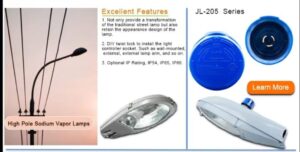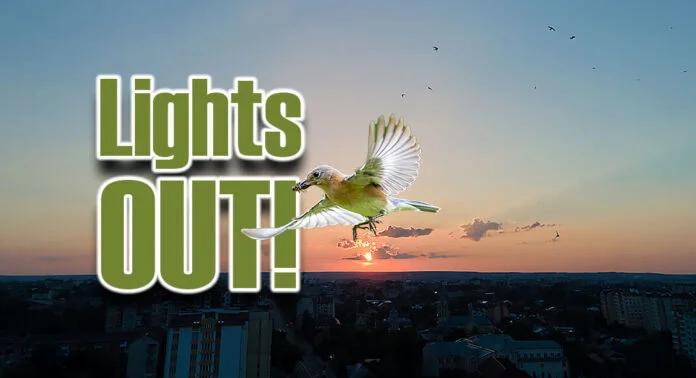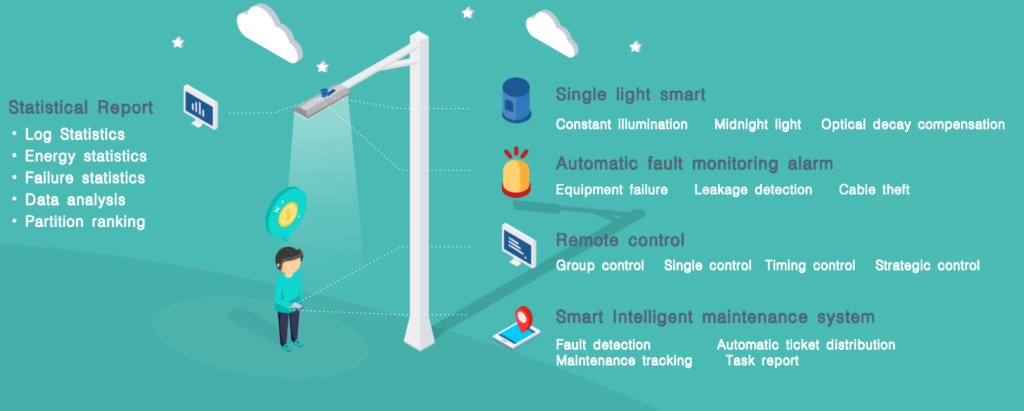Outline
- Introduction
- How is Traditional Lighting affecting? Pain Point Analysis
- How Modern Lighting Controllers Can Help?
- What Engineering Validation Measures Ensure the Durability of Smart Phocontrol Switches?
- The Bottom Line

The outdoor smart lighting market is transforming fast. But legacy systems are falling behind. High energy costs, poor system integration, and inefficient lighting are common issues. Cities and businesses need smarter, greener, and more connected solutions. The next generation of lighting controls is stepping in with powerful breakthroughs in energy-saving, intelligent sensing, and IoT integration. This article explores what’s holding the industry back—and how these innovations are changing the game.
How is Traditional Lighting affecting? Pain Point Analysis
High Energy Consumption
Traditional outdoor lighting uses a lot of energy. The U.S. alone consumes about 380 terawatt-hours of electricity each year. At least 30% of this energy is wasted. That’s enough power to run New York City for two years.
Operational Costs Boost
Maintenance costs add to the problem. Aging infrastructure needs frequent repairs. Manual checks and replacements increase labor expenses. They also put maintenance crews at risk. This increases operational costs and causes longer outages and safety concerns.
Light Pollution and Glare Complaints
Light pollution is a growing issue. A significant population worldwide is confronting the problem. In North America, 80% of people can’t see the Milky Way. In Europe, this figure is around 60%.
But that’s just one aspect of how light pollution affects. Besides this
- It disrupts wildlife
- It changes ecosystems
- It can cause health problems, including sleep disorders, depression, and more.
Here is a table showing some common health issues and how light impacts them.
| Health Issue | Description |
| Sleep Disorders | Exposure to artificial light at night suppresses melatonin production. This leads to insomnia |
| Obesity | Hormonal imbalances due to light exposure at night can contribute to weight gain and obesity |
| Diabetes | Circadian disruption from light pollution affects glucose metabolism, increasing the risk of type 2 diabetes |
| Heart Disease | Chronic exposure to light at night is associated with increased risk of cardiovascular diseases |
Lack of Iot Integration
Iot adoption is limited in traditional lighting. They can’t integrate light sensor switches. This makes them incompatible with smart city technology. Without interoperability, smart lighting can’t grow.
The new Matter standard tries to solve this. It offers a single protocol for smart devices. Its update brings multi-device QR codes and NFC tap-to-pair. Still, outdoor lighting systems rarely use Matter. Most remain isolated and offline.

How Modern Lighting Controllers Can Help?
Automated Lighting for Energy Efficiency
Photocells regulate brightness depending on the surrounding light level. They automate lights, on at sunset and off at sunrise. This makes energy utilized only when it is required, ultimately reducing power consumptions..
Demand-Based Dimming and Adaptive Brightness
Photo controllers allow for demand-based dimming. It controls brightness in real time. Lights can be dimmed during off-peak hours or lightened when motion is detected. While energy savings are obvious, it also boosts safety and security. Here is a table outline energy savings with adaptive lighting.
| Scenario | Brightness Level (%) | Time Active (hrs/night) | Energy Saved vs. Full Power (%) |
| Low Traffic Hours (12 AM–5 AM) | 30% | 5 | 70% |
| Moderate Traffic (8 PM–12 AM) | 60% | 4 | 40% |
| High Traffic (5 PM–8 PM) | 100% | 3 | 0% |
Reduced Maintenance and Longer Fixture Life
Implementing smart lighting controllers leads to decreased maintenance requirements. By optimizing light usage, they prevent overuse of fixtures, thereby extending their operational life. This results in fewer replacements and reduced labor costs. Here is a cost comparison table of traditional vs. smart Systems.
| Lighting Type | Annual Replacement Rate | Avg. Labor Cost per Fixture | Monitoring Method | Downtime Risk |
| Traditional Lighting | High (1–2 times/year) | $100–$150 | Manual Inspections | High |
| Smart Lighting | Low (every 5–10 years) | $30–$50 | Remote Diagnostics | Minimal |
Integration with Time-of-Use (TOU) Electricity Rates
Modern controllers work with Time-of-Use (TOU) pricing. They adjust lighting schedules to avoid peak electricity rates. This results in big cost savings. This can lower yearly electricity bills by more than 23%.
Here is a table outlining TOU pricing for some popular states of the US.
| Region | On-Peak Hours | Off-Peak Hours |
| Pennsylvania | 2–6 PM (Weekdays) | 6 AM–2 PM, 6 PM–Midnight |
| California | 4–9 PM (Weekdays) | 12 AM–3 PM Weekdays |
| New York | 2–7 PM (Weekdays) | 7 PM–2 PM, Weekends |
| Arizona | 2–8 PM (Weekdays) | 8 PM–2 PM, Weekends |
Scalability for Smart City Applications
Smart lighting controllers are built to scale. They fit well into growing urban systems. They can connect with traffic control, safety systems, and environmental sensors. This helps cities operate more efficiently. It also supports data-driven planning and improves life for residents. As cities grow, these flexible systems enable smart, sustainable development.
AI-Powered remote control lights for Precision Control
New smart photocontrol receptacles now use AI-powered multi-spectral sensors. These sensors adjust color temperatures between 5000K and 6500K in real time. They offer precise illuminance control from 0.1 to 100 lux. This reduces error rates found in older systems. The result is better visibility and safer environments. It also cuts down on wasted energy.
Key Advantages:
- Adaptive lighting adjusts illumination according to real-time conditions. This enhances road safety.
- Precise control cuts down on energy waste. This results in cost savings.
- Targeted lighting reduces glare and light spill, helping maintain the natural night environment.
Dual-Mode Energy-Saving Architecture
Modern photosensors now combine photovoltaic energy storage with smart grid switching. This dual-mode setup cuts total energy use by up to 55%. It’s a cost-effective and eco-friendly lighting solution.
Seamless IoT Integration with Matter Protocol
Today’s lighting controllers support the Matter protocol by default. They connect easily with Alexa, Google Home, and Apple HomeKit. The open API supports large-scale smart city features. These include vehicle-road coordination and environmental sensing. Matter boosts device compatibility and simplifies integration. It also expands what smart lighting can do in urban areas.
Benefits:
- Unified standards allow for consistent operation across various devices and platforms.
- Enhanced interoperability facilitates communication between devices from different manufacturers. This simplifies system expansion.
- Regular updates ensure compatibility with emerging technologies and devices.
What Engineering Validation Measures Ensure the Durability of Smart Phocontrol Switches?

Electromagnetic Interference (EMI) and Surge Protection
Modern lighting controllers are built to reduce electromagnetic interference. They comply with standards like ANSI C82.77-1-2020 and EN 55015. These standards cover EMI performance from 0 to 400 GHz. Strong surge protection also shields the system from voltage spikes. This improves the durability and stability of the lighting setup.
Third-Party Certifications and Standards Compliance
Labels like UL, CE, and RoHS show compliance of photocells with international standards. They build trust among buyers and prove the product meets legal and safety norms. Here is a table explaining the most commonly adopted certification for outdoor LED street light photocells
| Certification | What It Covers | Region |
| UL (Underwriters Laboratories) | Ensures the safety and performance of electrical components | United States, Canada |
| CE (Conformité Européenne) | Confirms conformity with health and environmental protection standards. | European Union |
| RoHS | Limits the use of specific hazardous materials in electronic products. | European Union, Global |
| NEMA | Provides performance and design standards for enclosures and electrical devices | United States |
Robust Design
New outdoor LED street light photocells are made for tough conditions. Here are some notable manufacturing feature and their benefits.
- An exceptional IP68 waterproof rating. This makes them dust-proof. They can also withstand long-term water immersion.
- Compatibility with extreme temperatures from -40°C to 70°C.
- They offer customization options to meet specific project needs.
Durability Certification
Modern outdoor LED light photocell systems are built to last. With an MTBF of up to 100,000 hours, they can run for about 11 years. There are multiple benefits of this, including, but not limited to:
- Maximum life span
- Minimized frequency of maintenance interventions
- Significant cost savings
- Reduced operational disruptions over time
Real World Case Studies
| Location | Project Scope | Energy/Cost Savings |
| Ovanåker, Sweden | Full municipal upgrade to LED + control | Over 60% energy reduction |
| Severn Trent, UK | Lowered lighting density; reduced CO₂ output | 92% energy savings, 96 tons CO₂ saved |
| Centrica Campus, USA | Flexible lighting controls, better user experience | $600,000 cost savings |
| UTeM, Malaysia | Reduced electric bills, faster ROI | Significant, exact figures not disclosed |
| Greek Residential Building | Controlled lighting based on occupancy and daylight | Up to 86% energy reduction |
The Bottom Line
Smart outdoor lighting is evolving fast, and the gaps in energy use and integration are finally being addressed. With advanced sensing, robust engineering, and Iot-ready design, the latest controllers are reshaping the market. For cities and businesses seeking reliable performance, Chi-Swear offers proven, future-ready smart street light controllers you can trust.
External Links
- https://darksky.org/resources/guides-and-how-tos/outdoor-lighting-for-policy-makers/
- https://en.wikipedia.org/wiki/Light_pollution\
- http://sciencedirect.com/science/article/abs/pii/S1001074222003291
- https://www.theverge.com/news/662266/matter-spec-update1-4-1-nfc-multi-device-setup
- https://en.wikipedia.org/wiki/Lux
- https://qmerit.com/blog/what-are-time-of-use-rates-a-guide-to-tou-for-electric-vehicle-owners/
- https://lumenradio.com/stories/swedish-municipality-maximizes-energy-savings-with-smart-lighting-control-and-led-fixtures/
- https://scenariio.com/seven-trent-case-study.php
- https://www.centricabusinesssolutions.com/us/case-study/new-lighting-system-saves-nearly-600000
- https://www.nichentenergy.com/post/case-study-the-benefits-of-switching-to-led-lighting-for-commercial-businesses
- https://www.sciencedirect.com/science/article/pii/S2590123024003499






